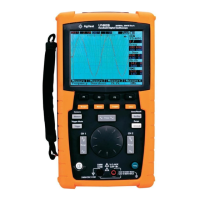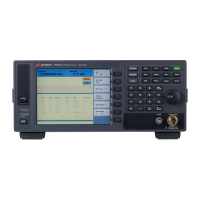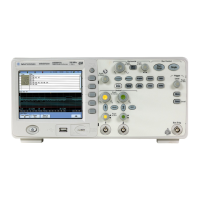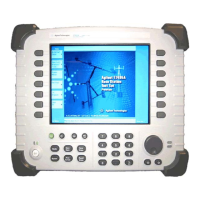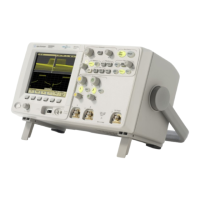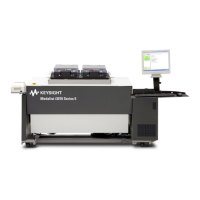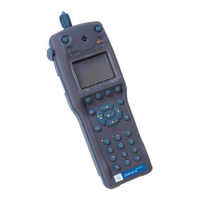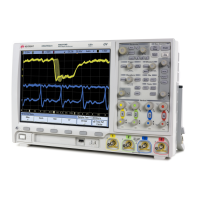Agilent U1602B/U1604B User’s and Service Guide xxvii
Figure 3-37. Addition of channel 1 and channel 2 function 74
Figure 3-38. Subtraction signal at channel 2 from channel 1 75
Figure 3-39. Save/Recall menu 78
Figure 3-40. The <Save> display indicates no setup file is being
saved. You can press F1 to save the setup into Setup
1. 79
Figure 3-41. The <Load> display indicates that a configuration
setup file has been saved into Setup 1 and you can press
F1 to retrieve the setup from internal memory. 80
Figure 3-42. The <Save> display indicates no waveform is being
saved, you can press F1 to save the waveform into
Waveform 1. 81
Figure 3-43. The <Load> display indicates the a waveform file is
saved into Waveform 1 and you can press F1 to retrieve
the waveform from internal memory. This function is
useful for waveform comparison. 81
Figure 3-44. The <None> display indicates that no setup file is
saved. The <Erase> in Setup 1 shows that you can erase
the setup file from the internal memory. 82
Figure 3-45. The <None> display indicates that no waveform is
being saved. The <Erase> in Waveform 1 shows that you
can erase the waveform from the internal memory. 83
Figure 3-46. Restore factory setup in Save/Load Setup menu. 85
Figure 3-47. The instrument requests confirmation to restore
factory default setting. 85
Figure 3-48. Connect a USB flash memory to save or download
waveforms to/from the external memory device. 86
Figure 3-49. Load a waveform from a USB flash memory
device 88
Figure 3-50. Run and Stop modes 91
Figure 3-51. Auto-power off control 92
Figure 3-52. Message display during low battery condition 94
Figure 4-1. Multimeter display 98
Figure 4-2. DC measurement display 99
Figure 4-3. Resistance measurement 101
